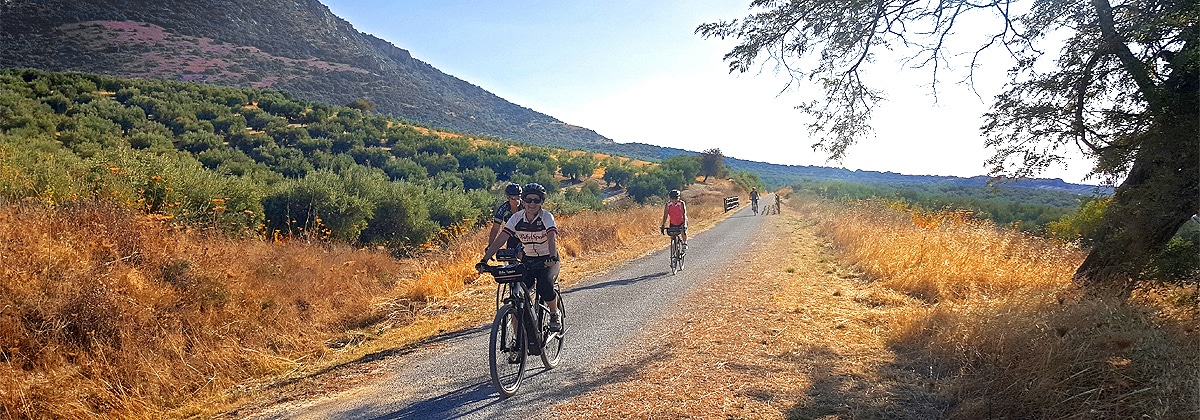
We’d love to keep up with the pictures and videos from your fabulous bike tour!
Give us a follow on Instagram at @bikespaintours and tag us in the posts from your trip.
Please leave your luggage in the hotel reception each morning (around 9am) so that it can be transferred to your next hotel. Make sure that your luggage is clearly labelled with the nametag provided by our Bike Spain Tours staff.
Your bike fitting is scheduled for Saturday, 9th March with our local partners Kýclos at their office: C/San Francisco, 50.
Call the Bike Spain Tours office on +34 915 590 653, or out of office hours call +34 677 356 586. We will get you where you need to be and get you the help you need.
Please be aware that Spaniards follow a very particular routine in terms of their daily meals, and this is often strictly enforced by restaurant opening hours, especially in small towns!
You can expect restaurants to be open for lunch from approximately 1:30pm – 4pm. Many places will offer a menú del día: a set menu with 2/3 options for each course, and usually including a drink and bread. Remember that lunch is the main meal of the day in Spain.
Dinnertime in Spain is any time from 8pm onwards. Dinner in Spain is typically a lighter meal.
18th February: Flamenco show
8pm: Dinner at Venta El Gallo (Barranco de los Negros, 5). The flamenco tablao is located in the Sacromonte district of Granada, approximately 20 minutes from your hotel on foot. Please allow enough time to arrive punctually. Your reservation is under the name John Nolan.
9pm: Flamenco show at Venta El Gallo.
Monday 19th February: Lucena
Arrival Day
Accommodation: Hotel Santo Domingo
Welcome to Andalusia and the start of an amazing tour!
4pm: Our Bike Spain Tours staff will pick you up from Hotel Casa de Capitel Nazari (Granada) and take you to Hotel Santo Domingo (Lucena) to carry out your bike fitting. Estimated transfer time: 1h 45 min
In the event of any issues, please call (+34) 636 856 195.
Your accommodation tonight is a repurposed 18th-century convent, full of local character and charm – the perfect place to begin your adventure!
Tonight’s dinner at the hotel is included in your tour package. Please advise reception of your preferred dinner time upon arrival.
At leisure in Lucena
Tuesday 20th February: Lucena – Zuheros
Route: 38 km/23.9 miles OR 108km/67.1 miles
Elevation: +690 m/2264 ft OR +2241m/+7352 ft
Accommodation: Hotel Zuhayra
Next, it’s time to start cycling! Enjoy a beautiful route through classic Andalusian countryside, over rolling hills covered with endless olive trees and vineyards. As you enter the town of Cabra, you have an optional ascent to the Hermitage of La Virgen de la Sierra, from where you can enjoy fabulous views (700m/2300ft over 12km/7.5 miles!)
Once in Cabra, you can decide whether you would like to go directly to Zuheros or ride an extra loop through the Protected Designation of Origin wine region of Montilla-Monriles, where you can visit Bodega Rockera (open Mon – Fri, 7am – 3pm) and/or one of the traditional lagares (wineries/olivepresses) We recommend La Primilla (open Mon – Fri 9am – 2pm / 5pm – 8pm, Sat/Sun: 10am – 2pm) or Los Raigones (open Mon – Fri: 9am – 2pm, Sat/Sun: 10:30am – 2pm).
After Cabra, you will continue along a peaceful greenway biking path, a former railway line once used to transport trains full of olive oil from Andalusia to the rest of Spain. Our destination for today is the charming medieval Moorish village of Zuheros, a striking example of beautiful Andalusian architecture, nestled in the Sierra Subbética mountain range.
Zuheros retains the traditional architectural style of white houses with ochre roofs, and is set at the foot of a historic Moorish castle.
Tonight’s dinner at the hotel is included in your tour package. Please advise reception of your preferred dinner time upon arrival.
At leisure in Zuheros
Wednesday 21st February: Zuheros – Priego de Córdoba
Route: 49.1 km/30.5 miles OR 78.8 km/48.9 miles
Elevation: +863 m/2844 ft OR +1375 m/+4512 ft
Accommodation: Hotel Patria Chica
Today, you will enjoy a day of cycling through dramatic landscapes, passing by the traditional Andalusian white village of Carcabuey on your way to your next destination: Priego de Córdoba.
As you leave Zuheros, you can decide whether to take an optional extra loop up to the hilltop town of Baena, protected by a 9th-century Moorish fortress, and surrounded by a sea of olive groves. On the way back to Zuheros, you’ll climb up to the hilltop town of Doña Mencía, from where you can enjoy spectacular views of the surrounding area: olive groves, the Sierra Subbética and medieval foretresses.
In the afternoon, take some time to wander the streets of the romantic Andalusian white village of Priego de Córdoba, surrounded by the mountains of the Natural Park of Las Sierras Subbéticas. This is one of the key stops on the Route of the Caliphate between Córdoba and Granada, recognised as an official Cultural Route by the European Council.
Optional: Reward yourself after your days of cycling with a traditional Arab bath and massage at Casa Baños de la Villa (open 10am – 12pm/6pm – 8pm).
Tonight, dinner is not included. The hotel restaurant is excellent; however, if you would prefer to explore the town further we recommend either restaurant Balcón del Adarve (open Tue – Sun 8pm – 12am) or Asador La Muralla (open Tue – Sat, 8pm – 12am), both located close to the hotel. Priego’s cuisine, made with olive oil with its very own Protected Denomination of Origin, completes this perfect day.
At leisure in Priego de Córdoba
Thursday 22nd February: Priego de Córdoba – Iznájar
Route: 31.7 km/19.7 miles OR 85.9 km/53.4 miles
Elevation: +528 m/1792 ft OR +1778 m/+5,833 ft
Accommodation: Hotel Caserío de Iznájar
Today you will enjoy a beautiful cycle route through the Natural Park of Sierra Subbética, riding through endless olive trees and along quiet roads that curve through the mountains as you bike south towards the valley of the river Genil. Your destination for today, Iznájar, is a gem of traditional Andalusian architecture: a maze of narrow streets and whitewashed buildings, winding their way up a hill overlooking the impressive reservoir of the same name. The Moors called the town Hins Ashar (stone castle), after the 8th century castle that keeps watch over the area from the top of the hill.
Your route takes us up into the town to explore the winding streets and enjoy the fabulous views, before heading back down to your hotel, located just outside town beside the reservoir.
If you feel like a bit more cycling once you arrive in Iznájar, you can enjoy an optional extra loop around the reservoir, visiting the small town of Rute, which boasts museums dedicated to sugar, aniseed and Iberian ham, and losing yourself among the sea of olive groves that covers the Andalusian countryside.
Tonight’s dinner at the hotel is included in your tour package. Please advise reception of your preferred dinner time upon arrival.
At leisure in Iznájar
Friday 23rd February: Iznájar – Antequera
Route: 50.8 km/31.6 miles OR 79 km/49.1 miles
Elevation: +809 m/+2654 feet OR 1184 m/+3884 ft
Accommodation: Parador of Antequera
Your final cycle route takes you along quiet country roads through the foothills of the Sierra Subbética, passing through olive groves and meadows. If you would like a longer route today, you have the option of cycling into the valley of the charming village of Riofrío, famous for its pure river waters which have made the area a production centre for organic beluga caviar, and consequently a place of pilgrimage for fans of fine gastronomy. The Caviar de Riofrío farm offers guided tours, subject to prior reservation.
On the way to Antequera, you will pass through the medieval frontier town of Archidona, a stage start line for this year’s La Vuelta a España. We recommend a quick stop here to visit the hilltop Moorish fortress. The route is largely downhill, allowing you to enjoy a relaxed ride into your final destination: Antequera. When you arrive at your accommodation, please leave your bike with reception for us to collect.
The city of Antequera dates back to time immemorial, to the extent that even the Romans named it “Antikaria”, meaning “ancient”! The city’s Bronze Age dolmens have been classified as a UNESCO World Heritage Site, and the patchwork of streets reflect the many different eras and cultures that have left their mark in the city over the centuries. The city is surrounded by mountains, of which the most famous is the Peña de los Enamorados (Lovers’ Peak), the base of many local myths and legends.
Dinner tonight is not included. The restaurant at the hilltop Parador de Antequera offers delicious local gastronomy with fabulous views; if you would prefer to eat out in the city, we recommend Restaurant Mar de Gloria (open Mon – Sat 7:30pm – 11pm) or Refectorio Hotel Convento La Magdalena (open daily, 8pm -10:30pm).
At leisure in Antequera
24th February: Antequera – El Torcal – Málaga
Accommodation: Eurostars Astoria Hotel Málaga
Please note that during today’s visit to El Torcal, you will be outside and walking over rocky, uneven terrain at an altitude of 1200m above sea level. For this reason, please make sure that you wear sturdy, comfortable footwear, and dress appropriately for the weather.
9:30am: Private transfer from Parador de Antequera to El Torcal. Estimated transfer time: 25 min.
Please remember to take all your luggage with you, as you will be continuing on to Málaga after your visit to El Torcal.
The transfer company is Sol y Mar. In the event of any issues, please call (+34) 655811795 or (+34) 630925964.
10am: Arrival at Centro de Visitantes Torcal Alto. Please check in at the Visitor Centre reception upon arrival, citing “John Nolan, 13811” as your booking reference. You can access your entrance voucher here.
10:30am: Start of your guided visit to El Torcal. The route is approximately 4.5 km in length, and starts and finishes at the Visitor Centre. Estimated duration: 3 hours.
1:30pm: Lunch at Restaurante Torcal Alto.
Private transfer to Hotel Eurostars Astoria (Málaga). Estimated transfer time: 1 hour.
At leisure in Málaga
Where to eat in Málaga
Restaurante José Carlos Garcia Plaza de la Capilla 1
Michelin star restaurant featuring avant-garde cuisine (open Tue – Sat 1pm – 4pm/7pm – 11pm)
Restaurante Matiz c/ Bolsa 14
Mediterranean fare with an Andalusian soul, a fusion of innovation and tradition with locally-sourced ingredients (open daily 1pm – 3:30pm/7pm – 10:30pm)
Restaurante Batik c/Alcazabilla 12
Innovative fusion cuisine with views over the Alcazaba (open Fri/Sat 1:30pm – 5pm, Sun 1pm – 3:30pm, daily 8pm – 11:15pm)
25th February: Málaga
Accommodation: Eurostars Astoria Hotel Málaga
At leisure in Málaga.
26th February
Departure day
After breakfast, our services come to an end.
We hope you enjoyed your time in Andalusia with us!
Hotel Santo Domingo
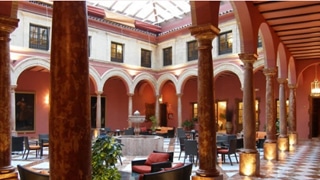
Hotel Santo Domingo is set in the heart of the historic Andalusian town of Lucena.
The building was once a convent, and still has a beautiful 18th-Century cloister. Lucena has a famous Mudejar church and a Moorish castle.
Hotel Zuhayra
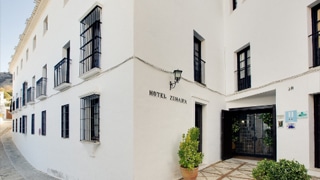
Small rural hotel with charm located in the town of Zuheros.
Zuheros is one of the most picturesque villages of Andalusia, whose sinuous route reveals its medieval origin, in the Natural Park and next to the Subbetic Greenway.
Hotel Patria Chica
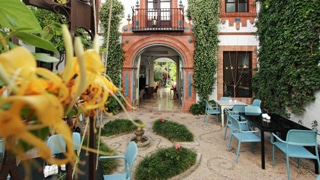
Hotel Patria Chica wants to offer you that moment and provide you a unique experience, far from overcrowded places.
How about a journey through time? A stay at this hotel-museum allows you to discover unrepeatable cultural moment of this lovely town. It’s a journey through the history, culture and customs of rural Spain at the beginning of the 20th century. Relax, discover and recover are the key words for this unique overnight location.
Hotel Caserío de Iznájar
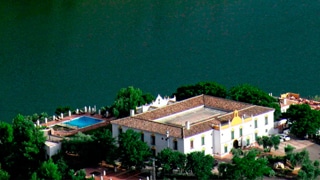
The Hotel Caserío de Iznájar rises impressively from the largest lake in Andalucía, the Iznájar reservoir.
Surrounded by nature, it offers visitors a unique experience, combining the tranquility of the lake and the beauty of the Sierras Subbéticas Natural Park.
Parador de Antequera
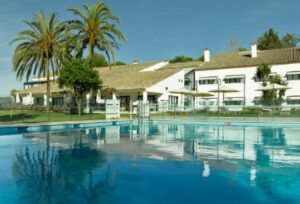
If there is one Parador that breaks with the trend of historic buildings and acts as a symbol of modernity, it is the Parador de Antequera.
Enormous windows allow the light to flood every corner and offer views of the magnificent landscape of Andalusia, with gorgeous sunsets over the Antequera plain and rocky formations known as the Peña de los Enamorados.
On a Bike Spain Tours vacation, understanding and abiding by the rules of safe cycling is vital.
You’re probably familiar with some common safety guidelines. Below are those that we follow at Bike Spain, and we ask that you follow them while traveling with us:
Being on a bike tour shouldn’t mean constantly worrying about your bike breaking down. Nevertheless, bikes are machines, and issues can occur. Here’s what to look for if something doesn’t sound, feel, or work right.
ACCIDENTS: In case of an accident, keep calm, get off the road and go to a safe place (such as the hard shoulder) where you can evaluate the problem. If you suspect that you need medical care, call the Spanish emergency services on 112, explaining clearly where you are and what the problem is. Have your passport and your insurance documentation handy before calling. Please contact our office immediately after speaking with emergency services.
Remember that personal insurance it is not included on our self-guided tours. We offer an optional insurance policy. If you choose not to purchase this, please make sure that you keep own insurance documentation with you (including your passport).
The tour price does not include any roadside assistance with bicycle maintenance (e.g. flat tires) or any other taxi transfers during the tour. Any repairs that need to be caarried out on the bicycles that are not a result of negligence on Bike Spain Tours’ part will be paid for by the client.
HELMET: Cycling on the road in Spain without a helmet is illegal and unsafe; remember to wear your helmet at all times.
To check the weather before you leave on your trip, please take a look at current weather conditions at www.weatheronline.co.uk. For historical temperature and precipitation statistics visit www.weatherbase.com or take a look at the Spanish Meteorological website with detailed information per region (http://www.aemet.es/en/elclima/datosclimatologicos/valoresclimatologicos)
The history of Spain is a compendium of influences from the different cultures that have lived in the country. The first settlers on the Peninsula were the Celts and the Iberians. The Roman presence in Hispania lasted for seven centuries, during which time the basic borders of the Peninsula in relation to other European towns were set up. Many institutions were inherited from Rome such as the concept of family, Latin as a language, religion and law. At the start of the 5th century new settlers from the North arrived and settled on the Peninsula: the Visigoths in the interior and the Swabians on the West. The decomposition of the Visigoth state apparatus would lead to the successive infiltration of Arab and Berber troops from the other side of the Straits of Gibraltar at the beginning of the 8th century. In the middle of the 8th century the Muslims had completed occupation and Cordoba became the center of the flourishing Andalusian state. The Arab presence in Spain would last for almost seven centuries and leave an indelible mark on the Spanish cultural heritage.
Following a long period of peaceful coexistence, the small Christian strongholds in the North of the Peninsula took on a leading role in the Reconquest, which ended with the capture of Granada in 1492 under the reign of the Catholic King and Queen, traditionally considered the founders of peninsular unity and the imperial management of the Spanish revival. The 16th century represents the zenith of Spanish hegemony in the world, a process that would last until the middle of the 17th century. Following the death of Charles II, the last of the Austrians, who died without having had children, Phillip V inaugurated the dynasty of the Bourbons of Spain.
The crisis of the Old Order opened the doorway to the Napoleonic invasion. The War of Independence was a war against the French invasion, but also a revolutionary war due to the decisive involvement of the people and the clear formation of a national consciousness that would later shape the 1812 Constitution. The Courts of Cadiz thereby enacted one of the first Constitutions of the world which ratified that sovereignty would reside in the nation. The conflict between liberalists and absolutists, or in other words, between two different ways of perceiving the establishment of the state, would be one of the longest Spanish conflicts throughout the 19th century.
The ballot box is introduced into Spain and with it the first democratic experience of the 20th century: the second Republic, a brief attempt to introduce the reformations the country needed, frustrated by General Franco’s military rising and the outbreak of the Civil War in 1936. The military victory of General Franco gave way to a long dictatorial period that would last until 1975. Following his death, the Spanish peacefully made the transition from dictatorship to democracy in a process known as ‘the Spanish model’. Don Juan Carlos I, as King of the Spanish people, became the chief of a social and democratic state of law, which molded the Constitution of 1978.
More information…? Should you be interested in a specific theme, please check here, you will find many info about culture, environmental issues, nature, society, geography and politics.
In Spain you have exquisite and innovative dishes with the guarantee of internationally prestigious chefs. The highest quality products from the best producers, recipes combining popular tradition with artistic creation and offer you exciting, new flavors. Spain’s culinary revolution, headed by master chefs like Ferrán Adriá, Arzak and Berasategui turns the pleasure of good food into a luxury for the senses that is at its finest when savored in Spain.
Spanish cuisine is nowadays recommended in the finest restaurants, heralded by the most prestigious critics and demanded by millions of consumers over the world. It has gone through a real revolution, which, in the time of a few short years, has put Spain at the top of international cuisine. With traditional styles as the basis, a modern, innovative cuisine has developed, identified by the use of quality products and by the creativity of its chefs.
To read more about Spain’s cuisine
In A.D. 711 Muslim armies swept into Iberia from strong holds in what is now Morocco. Since then, Spain’s southernmost district has been enmeshed in the mores, art and architecture of the Muslim world. During the 900s, Andalucía blossomed into a sophisticated society. – Advanced in philosophy, mathematics and trading – that far surpassed a feudal Europe still trapped in the dark ages. Moorish domination ended completely in 1492, when Granada was captured by the armies of Isabella and Ferdinand, but even today the region offers echoes of this Muslim occupation. Andalusia is a dry district that isn’t highly prosperous, despite such economically rejuvenating events as Seville’s Expo. The major cities of Andalusia deserve at least a week, with overnights in Seville, Cordoba and Cadiz. Perhaps greatest of all is Granada, a town of such impressive artistry that it inspired many of the works by the 20th-century romantic poet Federico Garcia Lorca.
Andalusia, a melting pot of cultures and cuisines
The Romans taught the Andalusians how to cultivate wheat and vines and used the fish from the seas to produce the best “garum” in the empire. The Arabs taught the Andalusians how to grow fruit and vegetables. They used irrigation systems and improved the cultivation of olive trees and the production of oil. Furthermore, the Greeks, Phoenicians, Carthaginians and Visigoths left their mark on the art, science, culture and gastronomy of Andalusia.
Info
About UsContact Info
Plaza de la Villa 1,
28005 Madrid
+34 915 590 653
info@bikespain.com
